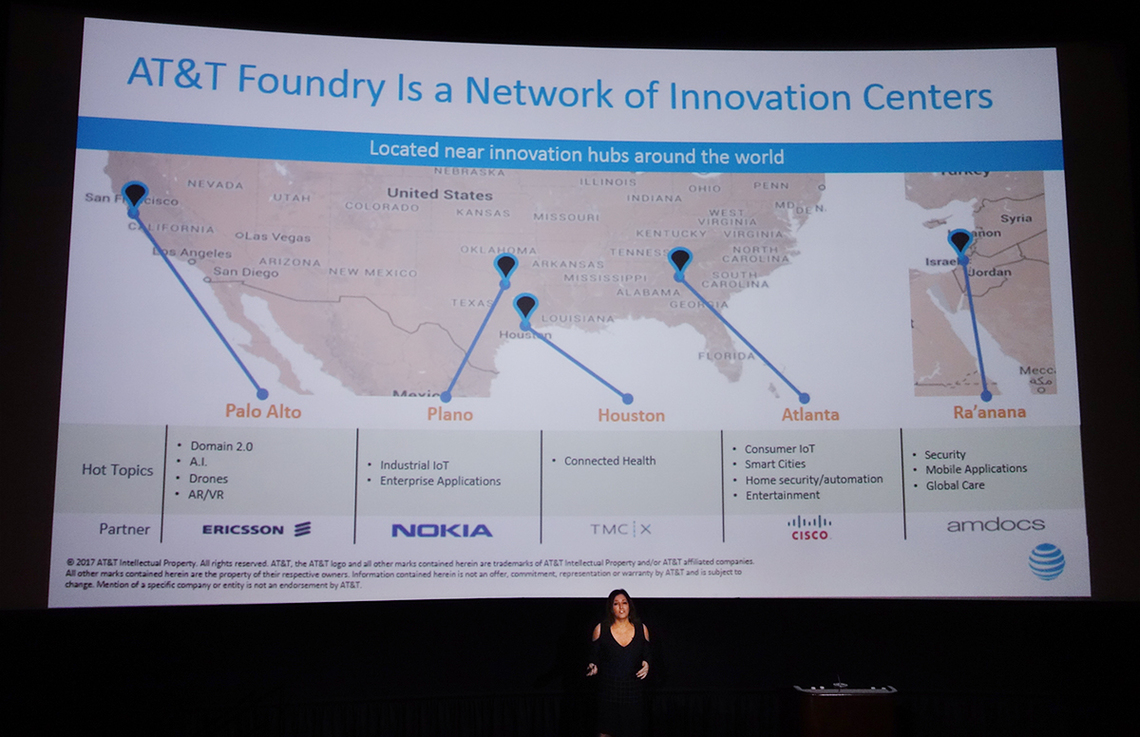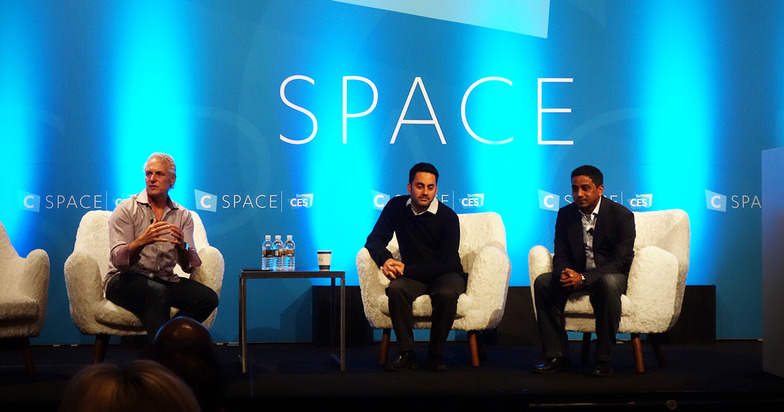CES is a major event covered extensively by many media outlets in Japan as well. This year, you likely encountered news about compelling gadgets and IoT products: Honda's self-balancing motorcycle, Toyota's AI concept car, Sony, LG, and Samsung's OLED TVs and quantum dot displays, Amazon Alexa-compatible home appliances, drones, VR...
However, what I consider CES's greatest appeal is the opportunity to hear firsthand from the C-suite executives of leading U.S. corporations. It's the earliest place in the year to learn how U.S. companies are confronting technology and digital transformation, and how they plan to use these to transform their management and marketing.
Actually, there's another thing I look forward to at CES: attending the developer conference held by AT&T, a major U.S. telecommunications company, the day before CES begins. What initiatives is AT&T undertaking? In which fields and technologies are they planning to invest? The developer conference is a place to deepen your understanding of their strategy, covering everything from smart homes and connected cars to healthcare and collaborations with startups.
In this article, I'd like to introduce sessions from these U.S. companies' announcements—which don't get much media coverage—that caught my interest.
How AT&T Says Innovation Creates Brand Value
The session that intrigued me most this year was the presentation by Ruth Yondoubian, Director of AT&T Foundry. AT&T Foundry is a global R&D organization established by AT&T to collaborate with external companies across various IoT domains and accelerate innovation.
As the world changes rapidly, brands are essential for companies, and "innovation" is a crucial element for those brands. He argued that engaging with the technology ecosystem contributes to new customer experiences and products, ultimately leading to brand lift.

Ruth Yondoubian, Director of AT&T Foundry, and the Current State of AT&T Foundry's Global Expansion
Additionally, we would like to introduce the nine key principles that drive innovation at AT&T Foundry.
Location: Open and Flexible
People: Encourage serendipitous encounters with engineers
Culture: Collaborative and experimental
Outreach and Inreach: Drawing inspiration from both inside and outside the organization
Approach: Focus on action
Project Momentum: Ensuring business impact
Connections with Disruptive Innovators: Serving as an interpreter between the company and disruptive innovators
Stage: Providing a platform
Collaboration: Partnering with Startups
VISA Accelerates Open Innovation
AT&T introduced Foundry as a function to generate innovation, emphasizing its importance for the brand. They presented Foundry's nine guiding principles, which I believe are nothing less than mechanisms for open innovation. At CES, Shiv Singh, Senior Vice President of Innovation at VISA, discussed co-creation with the startup community.

CXO session at CES. Center: Shiv Singh, Senior Vice President of Innovation at VISA
According to Shiv, the startup community is glamorous, exciting, fun, and intellectually stimulating, but it didn't contribute much to VISA's business. 99% of startup innovations don't succeed. Therefore, VISA changed its previous approach of waiting for startups to approach them. Instead, VISA proactively set the terms for collaboration and reached out to startups. Specifically, VISA held competitions with 1,000 startups over three years and selected five winners to partner with. This is a highly interesting and dynamic initiative.
To drive this open innovation initiative, VISA is actively opening its APIs (Application Programming Interfaces – a collection of commands, protocols, and functions programmers can use). By making its APIs available to numerous startups, it aims to spark innovation.
New Ecosystem
The book also touches on the perspectives of Chief Digital Officers (CDOs) and innovation executives from other major companies like Nordstrom, Domino's Pizza, and American Family Insurance. What stands out across these companies is the senior leadership's deep understanding of technology and its high strategic priority. Furthermore, it's clear they are undertaking numerous challenges to drive innovation through technology. These include partnerships with startups, exploring co-creation models with external companies, and API exposure. And the speed is remarkable. I attend AT&T's developer conference annually, and the company launches new foundries in different domains each year, each involving hundreds of prototyping and collaboration projects of varying scales.
These initiatives, processes, and speed are often seen in Japan as primarily characteristic of internet venture culture. However, the executives of major global corporations I encountered at CES are entirely different. They are engaging with the internet ecosystem through rapid decision-making and investment, and Japanese corporations have much to learn from them. CES is an excellent place to witness the efforts of American companies adapting to new technology-driven ecosystems and driving innovation.
If any readers have the opportunity to visit CES, I highly recommend attending numerous seminars to gain insight into the initiatives of U.S. companies.




